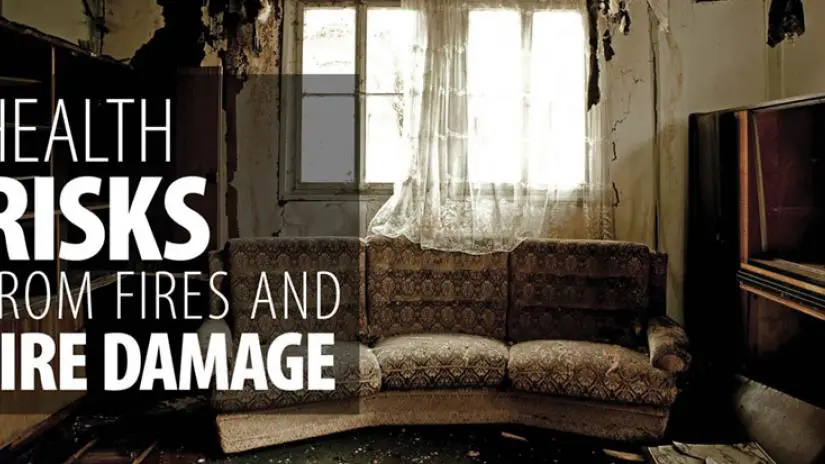
Rainbow Restoration highlights the dangers of smoke, soot, and mold after fire damage, emphasizing the need for professional remediation.
|
Fire smoke is a toxic soup of dangerous gases and a deadly enemy to all those exposed to it, from families to firefighters. Sadly, in addition to smoke inhalation, many unknowingly expose themselves to additional fire-related dangers well after flames are extinguished. If your home has recently been affected by a fire, don’t put yourself or your family at risk.
Know and understand health risks from fires and fire damage:
- Smoke
Smoke released in any type of fire is produced by the incomplete combustion of materials. It contains an array of toxins…- Carbon monoxide and hydrogen cyanide (HCN) – “The Deadly Duo”
While most Americans are aware of the dangers of carbon monoxide (CO) in regards to combustion, which decreases the body’s oxygen supply resulting in headaches, nausea, drowsiness, and ultimately death, the dangers of hydrogen cyanide exposure as a result of smoke inhalation are largely unknown. In fire smoke, studies show hydrogen cyanide can be 35 times more toxic than CO, causing severe injury or death within minutes. In combination, the two create a deadly chemical asphyxiant, shown by research as a significant contributor to fire-related deaths annually. - A cornucopia of chemicals
Wood smoke alone shares more than 100 chemicals in common with cigarette smoke, so it shouldn’t be surprising to find the array of materials in your home (rugs, plastic, compressed wood products…) release even more chemicals in smoke: Hydrogens (hydrogen sulfide/hydrogen chloride/hydrogen cyanide), alcohols, phenols, cresols, carboxylic acids, ketones, ammonia, nitrogen oxides, aldehydes, acid gases, sulfur dioxide, bromomethane, halocarbons , polycyclic aromatic hydrocarbons (PAHs), benzene, toluene, styrene, thiols, tar, metal, and dioxins.
- Carbon monoxide and hydrogen cyanide (HCN) – “The Deadly Duo”
- Soot
Just because the fire is out, doesn’t mean you can breathe easier. Fire damage is not contained solely to burned items. Hidden dangers linger in soot, which can deposit itself in every room of your home, including the HVAC system and venting – even the structure, leading to lung irritation and other health problems. Far from “dirt,” the negative aspects of soot exposure have been well-known since the 18th century Chimney Sweepers Act was passed by the British Parliament in response to its link to cancer. Deposited on your home’s surfaces, it, like smoke, is a complex cocktail of dangerous substances. It can enter your bloodstream by inhalation and ingestion, or absorption through the skin and eyes, causing a wide array of health problems including respiratory issues (asthma, bronchitis, shortness of breath), stroke, heart attack, cancer, and premature death. In infants, even short-term exposure to soot has been shown to permanently alter respiratory system development, leading to lifelong health consequences. - Biological contaminants
Fire extinguished with water? You must literally race against the clock to clean up wet areas before mold starts to grow, which can happen is as little as 48 hours on any organic surface water comes into contact with. This mold growth makes the restoration process increasingly difficult and expensive – and is not your only worry. Water also supports the growth of illness-causing bacteria which you can be exposed to in the same manner as the substances in soot.
Don’t risk smoke inhalation and other fire-related health dangers. Post-fire cleanup is hardly a D-I-Y endeavor. Get the professional restoration help you need to ensure no surface is excluded and every hazard properly addressed to safeguard the continued health of your family. Contact Rainbow Restoration ® today.
Additional Reading:
Fire Escape Plans for Work and Home
Cleaning and Storing Contents: How We Handle Your Belongings
Fire Damage: What to Do After the Dust Settles
Cleaning and Storing Contents: How We Handle Your Belongings
